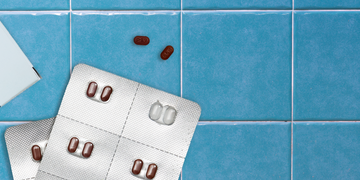Why does it burn when I pee?

Most people will experience burning when they pee at least once in their lifetime. Let’s take a look at some of the common causes, prevention methods, diagnoses, and treatments for this uncomfortable situation.
What is dysuria?
Dysuria refers to the symptoms of discomfort, pain, or burning when you pee. Getting a thorough evaluation from a medical care provider will help prevent or manage any underlying cause. Typically more common in women than in men, this type of pain is often described as a burning sensation and might happen when you start to pee or after you finish.
Understanding when and where the pain occurs can help your doctor narrow down the underlying cause. For women, the discomfort may be internal or external. When the sensation is internal, it’s likely due to a urinary tract infection.
What are the causes of dysuria?
Urinary tract infections (UTIs)
One of the most common causes of dysuria is a urinary tract infection. This type of infection happens when bacteria overgrow in the kidneys, bladder, or urethra. Along with frequent and painful urination, UTIs can cause pelvic or abdominal pain, cloudy or reddish urine, and the urge to pee when your bladder is empty.
You might also experience nausea, vomiting, chills, fever, or back pain when you have a UTI. These symptoms signify that the infection may have spread to the bloodstream or your kidneys.
Factors that make you more likely to experience UTIs are:
- Health conditions that make it difficult to empty your bladder completely
- A compromised immune system
- Menopause (the vaginal microbiome changes)
- Sexual activity
- Urinary catheters
Yeast infections
Yeast infections occur when there’s an overgrowth of yeast. Possible causes include an impaired immune system, uncontrolled diabetes, antibiotic use, and higher estrogen levels (from pregnancy or hormone therapy). Along with painful urination, you might experience changes in the odor, texture, and color of vaginal discharge.
You can reduce your risk of yeast infection by avoiding:
Shop the article
- Scented hygiene products and douching
- Staying in wet clothing for an extended period
- Unnecessary antibiotic use, which affects your microbiome
- Tight underwear
Sexually transmitted infections
Chlamydia, gonorrhea, and genital herpes can all lead to discomfort when you pee. Other symptoms that suggest you may have an STI include burning, itching, and unusual discharge.
To help reduce your risk of STIs, you can:
- Use condoms during sex (oral, anal, or vaginal)
- Get tested regularly
- Talk with your partners about their STI status and testing history
Inflammation and irritation
General irritation of the genital area can lead to uncomfortable urination. Possible reasons for this can include:
- Side effects from certain supplements, medications, and treatments
- Vaginal sensitivity from using scented hygiene products or toilet paper
- Changes to your vaginal microbiome due to menopause, antibiotic use, or other causes
- Sexual activity
- Activities like biking or horseback riding
- Conditions that cause bladder inflammation like interstitial cystitis
- Endometriosis
- Tumors or stones in the urinary tract
Prevention, diagnosis, and treatment for dysuria
Preventing dysuria
Dysuria, no matter the underlying cause, can definitely be annoying and uncomfortable. The underlying cause can potentially lead to further health problems if it’s not dealt with, so it’s best to try to address things early if you can.
To reduce the risk of repetitive bacterial infections (such as UTIs):
- Drink more water
- Wipe front to back
- Avoid scented feminine products
- Pee when you feel the urge – don’t hold it!
Diagnosing dysuria
Your primary care provider will review your medical history to help narrow down the possible causes. Getting a diagnosis often involves peeing in a cup for your urine to be analyzed. If there are signs of infection, your clinician will probably prescribe a cycle of antibiotics that you take for 3 to 5 days.
Your doctor may order a urine culture to help identify what type of bacteria is causing the problem, especially if a cycle of antibiotics is ineffective. Identifying the bacteria can help your primary care provider prescribe a more effective treatment.
Treating dysuria
To treat dysuria, you’ll need an accurate diagnosis of the underlying condition. The typical treatment for a UTI is a cycle of antibiotics. If the pain is due to a skin irritant, identifying what’s irritating your skin and eliminating it can help you find relief.
The treatments for other underlying conditions may vary. Your primary care provider will use physical symptoms to help diagnose the problem.
Possible treatments for dysuria include:
- Avoiding certain foods like alcohol, caffeine, processed foods, spicy foods, and food with high levels of potassium
- Symptomatic therapy
- Urethral dilation
- Medications for certain conditions, including for an overactive bladder or vaginitis
- Antibiotics (commonly used to treat UTIs or urethritis)
If you are experiencing pain, discomfort, or a burning sensation, make sure to get in touch with your primary care provider to get an accurate diagnosis.
Questions? We’re here for you, every step of the way. Reach out at hi@hellowinx.com and learn more on Real Talk.
Keep Reading

We asked a Doctor all your UTI Questions
Dec 7

How do you know if you have a yeast infection?
Nov 8

What are the symptoms of STDs in women?
May 17











